Duplex stainless steel is simply an austenitic-ferritic alloy, which brings together the best of both worlds. It is a combination of properties that allows for many uses. Duplex stainless steels are strong with excellent corrosion resistance and good weldability properties, therefore being used in oil & gas industry equipment like pipes or tanks, among others, where they can succeed in aggressive environments better than any other material. This article examines different grades of duplex stainless steel, their characteristics, and applications, and why these materials outperform traditional types under some circumstances. Whether you’re a buyer, engineer, or someone who loves science, this comprehensive review will provide all the information required to decide how to use duplex stainless steel in various projects.
What is Duplex Stainless Steel?
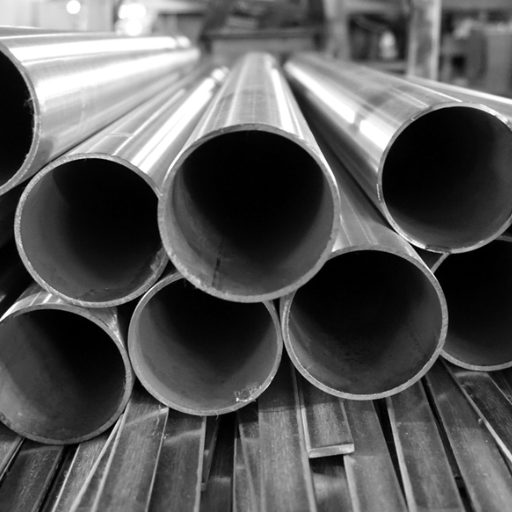
Image source: https://www.gpss.com/
Duplex stainless steel is a kind of stainless steel composed of two microstructures, namely austenite and ferrite, each accounting for about 22% chromium (Cr), 5% nickel (Ni), plus other elements such as molybdenum (Mo), and nitrogen(N). The unique chemical composition offers this alloy various mechanical properties, including high strength levels and improved resistance to SCC–stress corrosion cracking even at low temperatures where toughness remains excellent. Apart from increasing its durability against severe environments, the presence of two phases makes it possible for effortless workability and weldability compared with conventional stainless steels, thus finding more expansive utilization areas, especially when there is a need for both mechanical robustness and anti-corrosion performance.
Understanding Duplex Steel Composition
To optimize the mechanical and corrosion-resistant properties of duplex stainless steel, it is necessary to understand its composition. Usually, it consists of about 22% chromium and 5% nickel, significantly contributing to its strength and resistance against different corrosive environments. Moreover, elements like molybdenum improve pitting resistance and overall durability, while nitrogen enhances strength and stress corrosion cracking resistance. This material’s unique combination of properties is achieved through a balanced microstructure comprising both austenitic and ferritic phases, making it suitable for use in harsh service applications within the oil & gas industry, among others, such as chemical process plants and marine engineering works. This knowledge helps engineers/designers choose the right type(s) of duplex stainless steel for specific applications, ensuring the best performance levels over time.
Difference Between Austenitic and Ferritic Stainless Steel
While studying various grades of stainless steels, I discovered that austenitic steels differ from ferritics primarily by their microstructures and compositions. Austenites are strict with good workability due to high levels of nickel plus chromium while being non-magnetic besides having better corrosion resistance than any other metal used in industry, hence finding wide application range from food processing equipment through pharmaceutical machines up buildings where hygiene matters most ought not to be compromised such as hospitals or schools among others. Still, those structures exposed directly to the saline environment along seashores, among others, can benefit greatly. Ferrite content decreases ductility but increases cost-effectiveness compared to austenites, thus making them more suitable for automotive or even specific industrial settings where this may be a critical parameter, especially if the manufacturing process involves large quantities at once so that savings realized could outweigh initial investments made into materials themselves; otherwise, there is no need sacrificing quality unnecessarily when cheaper alternatives are available.
Common Duplex Stainless Steel Grades
There are several different grades that duplex stainless steels can be divided into depending on what properties they have, each suited for various applications. Some of the more common ones include:
- UNS S31803 (F51): This grade is widely used because it has good corrosion resistance and high strength. It can resist various environments, such as those induced by chlorides, which cause stress cracking in different parts of oil and gas industry equipment, including heat exchangers and pulp and paper mills.
- UNS S32205 (F60): This type possesses increased levels of chromium and molybdenum than UNS S31803 but still shares similar corrosion resistance properties with it while being more robust. This is due to enhanced corrosion resistance abilities from higher chrome content levels alone without any other additions needed like nitrogen does in this case. Its higher content level makes it more suitable for chemical processes involving chlorides or compounds containing them at elevated temperatures where marine conditions prevail.
- UNS S32550 (F61): Compared to the above two grades, this one has even better mechanical properties plus excellent pitting/ crevice corrosion resistance. The alloy is particularly suited for highly aggressive environments like those encountered in handling seawater systems or working with chemicals under extreme conditions such as those found within refineries, where strong acids may be present alongside bases, corroding away metals fast unless protected adequately.
With these designations, we can choose suitable materials that will last long enough in specific environments, even when subjected to harsh usage requirements.
What are the Mechanical Properties of Duplex Stainless Steel?
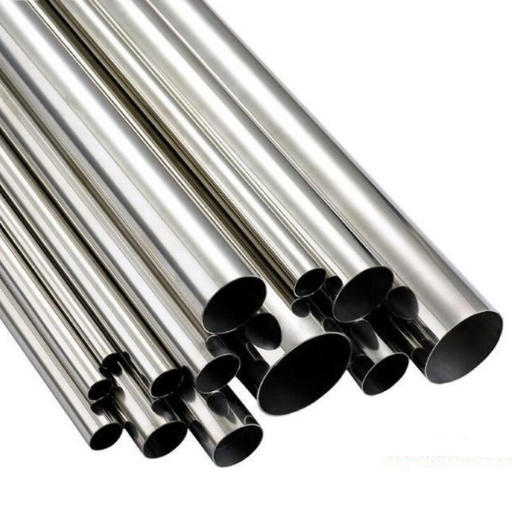
Duplex stainless steels manifest an exclusive mingle of mechanical properties because they have a combination microstructure of austenite and ferrite. Some significant mechanical properties include:
- High Strength: Duplex steels show superior strength in relation to conventional austenitic and ferritic stainless steel, making them applicable for structures required to bear high loads.
- Good Ductility: Duplex steels, though strong, still maintain good ductility and toughness at both room temperature and elevated temperatures, thereby allowing for some amount of deformation without breaking apart.
- Fatigue Resistance: The evened-out microstructure in duplex stainless steel provides great fatigue resistance, making it last longer when used under cyclic loading conditions.
- Impact Strength: They also possess high impact strength, which means they can withstand sudden loads or shocks without failing.
- Corrosion Resistance: This is primarily chemical, but equally important is understanding the relationship between these two factors since duplex stainless steels have inherent robustness and greater resistance against various forms of corrosion, especially in aggressive environments.
Engineers and designers need to understand these properties when selecting materials for specific applications.
High Strength and Corrosion Resistance
Duplex stainless steels are so popular among different industries because of their exceptional tensile strength combined with excellent rusting resistance, making them suitable for harsh environments. For instance, this type of metal often achieves yield strengths twice higher than those found in traditional austenitic, thereby saving weight without compromising structural integrity under heavy loads. Furthermore, its composition improves resistance against pitting and crevice corrosion, mainly caused by chlorides, increasing durability in marine settings with continuous exposure to seawater or harboring chemicals. Additionally, having both high strength levels and the ability to resist corrosion
Impact of Heat Treatment on Duplex Alloys
Heat treatment is essential when changing the mechanical properties of duplex stainless steels. There have been times that, through my experience with heat treatment, I learned that the processes could enhance strength and toughness by creating a more even mixture of austenite and ferrite phases. It is confirmed that some methods, such as solution annealing or aging, could improve resistance against stress corrosion cracking besides enhancing overall corrosion resistance. Nevertheless, if heat treatment is done incorrectly, there can be phase imbalance, yielding low mechanical performance. Therefore, one must follow proper guidelines and adhere to the manufacturer’s recommendations on treating these materials to realize all the benefits of duplex alloys.
Resistance to Stress Corrosion Cracking
Heat treatment is critical when changing the mechanical properties of duplex stainless steels. There have been times that, through my experience with heat treatment, I learned that the processes could enhance strength and toughness by creating a more even mixture of austenite and ferrite phases. It is confirmed that some methods, such as solution annealing or aging, could improve resistance against stress corrosion cracking besides enhancing overall corrosion resistance. Nevertheless, if heat treatment is done incorrectly, there can be phase imbalance, yielding low mechanical performance. Therefore, one must follow proper guidelines and adhere to the manufacturer’s recommendations on treating these materials to realize all the benefits of duplex alloys.
How is Duplex Stainless Steel Manufactured?
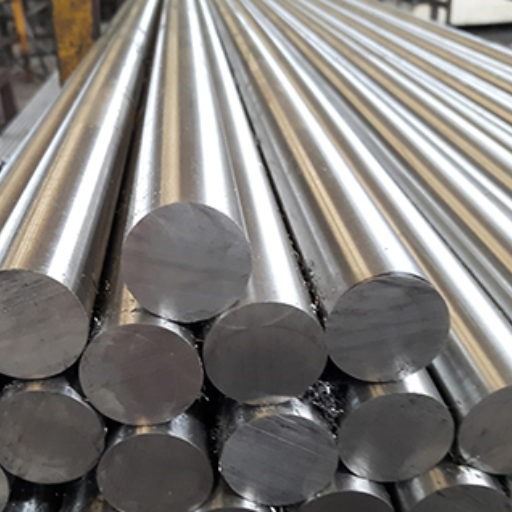
Duplex stainless steel is created through controlled processes that yield the desired microstructure and properties. These methods start by selecting high-quality raw materials, mainly iron and alloying elements like nickel, molybdenum, and chromium. Electric arc furnaces are used to create the melt, followed by refining it to attain the required composition, after which alloys undergo solidification before being cast into different shapes, such as slabs or billets. It then goes through hot working, which involves processing at elevated temperatures to increase ductility and workability before being subjected to heat treatment processes, including solution annealing, where austenite-ferrite balance is achieved. Finally, cold working might improve mechanical properties before finishing operations like machining and surface treatment, ensuring stringent specifications for various applications are met.
Alloying Elements in Duplex Steel
The duplex stainless steels have austenitic-ferritic microstructures attributable to their alloying elements. The following are some of the key alloying elements in duplex stainless steel:
- Chromium: This element contributes about 18% – 30% by weight; it enhances corrosion resistance and promotes ferritic phase formation.
- Nickel: Usually added at levels between 4% and 8%, nickel increases ductility and toughness, stabilizing the austenitic phase while enhancing the steel’s overall stress corrosion cracking resistance.
- Molybdenum: It’s found that up to 3% Mo content typically improves pitting resistance, especially when exposed to chloride-rich environments.
Other elements can also be added, e.g., nitrogen for strength improvement and corrosion resistance; manganese controls the solidification process, etcetera. By carefully balancing these alloying agents, duplex steels achieve high mechanical properties coupled with good corrosion resistance, hence applicable in various industries like chemical processing plants, oil & gas refineries, and marine environments, among others, where these materials may be used.
Manufacturing Process of Duplex Stainless Steels
Many necessary steps are taken in manufacturing duplex stainless steels to ensure they perform well and are high quality. To begin with, raw materials are selected carefully, considering only those with the specific alloying elements that give duplex steels their unique properties. After this, the metals are usually melted in an electric arc furnace during the process known as melting; here, they are heated until they melt at very high temperatures, then later solidified into slabs or billets.
Hot rolling is used to create the thicknesses and shapes desired for the material after casting. This step is key to forming a duplex microstructure by facilitating the austenitic and ferritic phases necessary to do so. Then, solution annealing is performed to equalize microstructures throughout it and improve resistance against corrosion, followed by fast cooling so as not to lose the required phase balance.
At times, cold working processes may be applied to steel to attain some specific mechanical properties before final treatments are done on it. These procedures guarantee the strength and corrosion resistance of duplex stainless steels, which makes them suitable for use in various industries where demands are high.
Quality Control in Duplex Stainless Production
In producing duplex stainless steel, quality control plays a significant role in ensuring compliance with strict industry standards as well as meeting customer requirements. Quality control starts with thoroughly testing raw materials to confirm if they fall within specified limits regarding alloying elements’ content. During the production stage, several checks are carried out, including checking the homogeneity of microstructures, dimensional accuracy inspection, and mechanical property tests. Non-destructive testing methods like ultrasonic/radiographic testing can be employed during this period to access hidden defects without compromising integrity; these methods detect internal flaws without causing any damage to the material being tested. Last but not least, reviewing certified test reports comprehensively while sticking to recognized standards such as ISO/ASTM helps preserve the trustworthiness/integrity of duplex stainless steels, thereby giving confidence to end users engaged in critical applications.
What are the Applications of Duplex Stainless Steel?
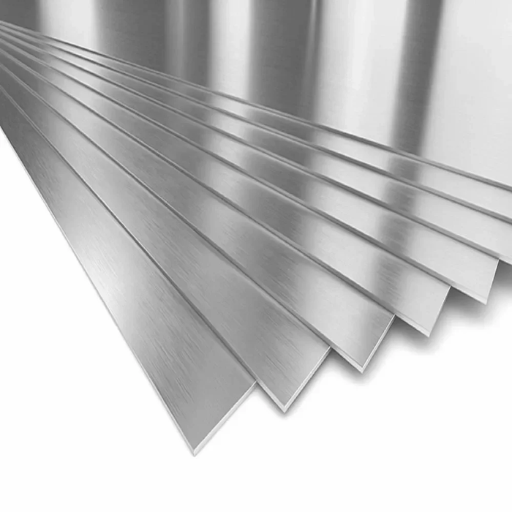
Duplex stainless steel is a well-known material used in many industries because of its excellent strength and resistance to corrosion. They are often selected for applications such as piping systems or pressure vessels in the oil and gas sector, where pitting and stress corrosion cracking (SCC) resistance are critical factors. Moreover, chemical processing plants frequently employ duplex stainless steels due to aggressive media environments while still needing good protection against acids, etcetera. Also, it is found to be used under marine conditions like heat exchangers and structural components for construction, where high strength combined with corrosion resistance can improve durability and performance over time. This versatility, coupled with its robustness, makes it suitable across multiple sectors within these domains.
Industries Using Duplex Stainless Steel Products
Various industries use duplex stainless steel products because they possess certain strong qualities. Some examples include:
- Oil and Gas Industry: Duplex SS is widely employed in this industry due to its high strength levels, which can withstand extreme environmental conditions found on offshore platforms and meet pipeline needs.
- Chemical Processing: Reactor tanks must be built using materials that can resist corrosive chemicals, thus making them ideal places for such constructions made from duplex stainless steel
- Marine Applications: Offshore structures need protection against seawater attacks, which are mainly caused by chloride ions present in salty water bodies around coastlines; hence, selecting materials with good seawater corrosion resistance like Duplex SS would ensure safety standards are maintained at all times during operation, among other things.
These unique properties greatly help these fields and cannot be ignored when it comes to engineering design solutions today.
Advantages of Using Duplex Grades in Specific Applications
I have encountered many positive aspects regarding duplex stainless steel in specific applications. Firstly, this is due to their uncommon mechanical strength, allowing for lighter design components without sacrificing structural integrity. This can be particularly useful in industries such as oil and gas, where weight reduction is known to improve efficiency. Secondly, these steels’ exceptional corrosion resistance results in longer service life, so repairs or replacements need not be done more often than necessary, both expensive and time-consuming. Lastly, they can withstand high pressures and temperatures, making them suitable for chemical processing plants where failure can lead to serious safety hazards or marine environments with corrosive seawater. In general, duplex stainless steels possess unique properties that offer significant advantages over other materials used under demanding conditions regarding performance reliability.
Case Studies of Duplex Stainless Steel Usage
- Oil and Gas Industry: One prominent example from this sector is subsea pipelines made out of duplex stainless steel. A large energy company chose these types because they are strong and corrosion-resistant. This allowed them to cut down on wall thickness by a lot, which made everything lighter overall and saved more money. It’s cheaper as well as faster during the installation process, thereby enhancing efficiency directly offshore extraction methods.
- Marine Structures: In building a new bridge over a saltwater estuary, they were successful in using Duplex Stainless Steel. The material had been chosen due to its ability to withstand the harsh marine environment, thus reducing maintenance requirements while extending its life span through corrosion resistance coupled with mechanical strength performance superiority.
-
Chemical Processing: The reactor vessels at one particular chemical plant were recently upgraded to have walls made from duplex stainless steel – this greatly improved safety levels within the facility since not only does it increase resistance towards high temperatures but also does so under high-pressure conditions too; moreover there was less downtime resulting from failures caused by corrosion hence showing just how tough these grades can be when used critical chemicals applications.
What are the Types of Duplex Stainless Steel?
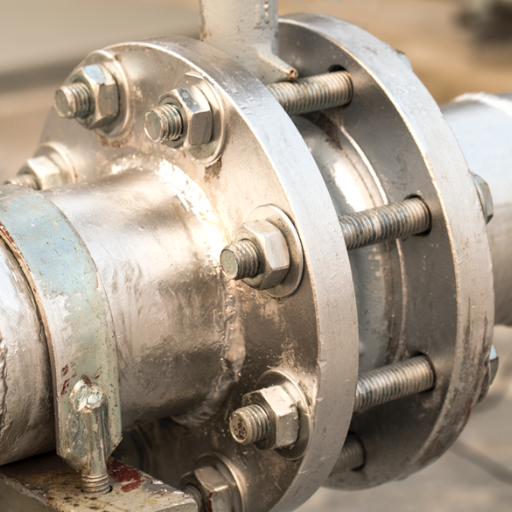
Broadly, duplex stainless steels can be classified into Lean Duplex and Standard Duplex.
- Lean Duplex: This category has less nickel and molybdenum, making it cheaper yet still able to resist corrosion well and maintain strength. It is usually used in cost-driven sectors like construction or chemical processing.
- Standard Duplex: Higher alloy grades offer better performance in aggressive environments. They contain more nickel and molybdenum, which increases their resistance to pitting and crevice corrosion. This makes them suitable for applications such as oil and gas or marine environments, where demand for such properties is high.
These groups provide flexibility when choosing materials for duplex stainless steel according to different industrial requirements.
Super Duplex vs. Lean Duplex Stainless Steel
When comparing Super Duplex with Lean Duplex stainless steels, one can notice differences mainly based on the alloy composition and performance attributes employed therein. Super Duplex stainless steel has more chromium, nickel, and molybdenum, giving rise to its excellent strength and corrosion resistance, especially in highly aggressive media like saltwater or chemical process industries (CPIs). Thus, super duplexes would be most appropriate where there is a need for increased durability, such as offshore oil platforms or chemical plants.
On the other hand, lean duplex offers lower costs due to reduced levels of Ni and Mo while still retaining good resistance against rusting. It finds typical applications in non-severe environments, including general industry constructions, which are too numerous to mention here. In terms of corrosive environment ability, though not comparable with superalloys, it serves the purpose reasonably well. In summary, whether one should select either super duplexes or lean duplexes depends upon particular requirements demanded by an application vis-à-vis available resources. Still, both options must always balance performance against cost considerations wherever necessary.
Comparing Hyper Duplex Stainless Steels
While exploring the Hyper Duplex stainless steels, I realized that these alloys are an upgraded category designed to perform better than Super and Lean Duplexes in extreme environments. What makes up a hyper duplex steel? It has superior mechanical properties and excellent resistance against localized corrosion due to its high Chromium (Cr) and Nitrogen (N) levels. I stumbled upon them during my analysis. They are perfect for chemical plants among other highly corrosive areas associated with eroding fast, such as oil refineries where pitting may frequently occur because their strength is incomparable vis-a-vis weight, meaning that large constructions can be made lighter with them, albeit at a higher initial price, but this could be compensated by increased longevity coupled with reduced need for regular upkeep making any hyper duplex stainless steel investment worth every penny especially when dealing with critical applications or structures which must withstand harsh conditions over time.
Characteristics of Various Duplex Stainless Steel Grades
Duplex Stainless Steels are broken down into grades according to their different characteristics, making them suitable for various uses. Commonly known grades include 2205, 2507, and 2304;
- Grade 2205: This is the most popular type of duplex stainless steel due to its good corrosion resistance and high tensile strength. It contains approximately 22% Chromium (Cr) – enough to ensure immunity from chloride stress cracking while holding up well against pitting caused by chlorides found in seawater, among other things. Nickel content in this alloy ranges between about four and five percent (4-5%). These qualities make it ideal for use on offshore platforms exposed to saltwater spray and hydrogen sulfide gas, which often causes sulfide stress cracking.
- Grade 2507: Sometimes referred to as “Super” Duplex because of its more extraordinary ability than standard duplexes at resisting aggressive environments such as those encountered throughout petroleum refining systems worldwide – particularly desalination plants where brine corrosion becomes problematical if not adequately guarded against during initial engineering design stages by specifying 2507 instead of other grades. Apart from being highly corrosion resistant due to an even higher Chromium (Cr) content of around twenty-five percent (25%) coupled with substantial amounts of Molybdenum (Mo), which may reach up to four percent (4%), it also possesses good mechanical properties including tensile strength levels exceeding those achievable using any single-phase austenitic or ferritic stainless steels so far known.
-
Grade 2304: This lean duplex stainless steel has lower Nickel (Ni) content than 2205 or 2507 but still offers reasonable resistance against corrosion, especially when compared to ordinary austenitic like type 304L. It may not be as durable under extremely aggressive conditions where more expensive alloys would perform better; however, it provides an economically viable alternative for applications requiring moderate protection from pitting and crevice attacks, such as architectural finishes on marine structures occasionally exposed only during maintenance periods like storage tanks in seawater environments near coastal areas characterized by intermittent immersion followed rapidly without prior rinsing off then drying in the air before re-submersion repeatedly occurs over several years thus promoting localized cells formation leading ultimately into rapid breakdown unless prevented through the use of appropriate materials like grade 2304.
What is the Corrosion Resistance of Duplex Stainless Steel?
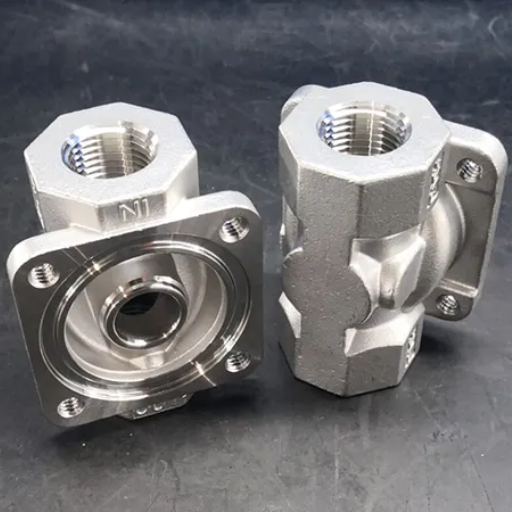
Duplex stainless steels have excellent corrosion resistance due to their exceptional microstructure, which contains both austenitic and ferritic phases. This two-phase organization enhances resistance to pitting and crevice corrosion, particularly in the presence of chlorides. Their ability to withstand stress corrosion cracking makes grades like 2205 and 2507 ideal for aggressive marine, chemical, and oil & gas applications. However, not all grades offer similar levels of protection against corrosion: Super Duplex varieties such as 2507 provide excellent defense in highly corrosive environments, while Lean Duplex grades like 2304 give enough resistance for less demanding conditions.
Factors Affecting Corrosion Resistance
Some of the factors that affect the corrosion resistance of duplex stainless steel include:
- Environmental conditions: The amount of chlorides present, pH level, and temperature significantly influence corrosion rates. Higher amounts of chlorides usually result in greater vulnerability to pitting and crevice corrosion.
- Microstructure and composition: Corrosion resistance is also influenced by the different proportions between the austenite phase (γ) and ferrite phase (α) along with other alloying elements like molybdenum (Mo) or nickel (Ni). Generally speaking, increased quantities of these components improve materials’ durability against hostile environments.
- Mechanical stresses: Stress can worsen problems with corroding materials, especially when exposed to chloride-based solutions. A combination of high-temperature tensile stresses may lead to stress cracking; hence, choosing an appropriate grade based on application conditions and known or anticipated mechanical loads is essential.
These factors will enable engineers/designers to select the most suitable duplex stainless steel grade for their specific application, ensuring optimum performance and service life.
Comparison with Standard Austenitic Stainless Steels
When I compare duplex stainless steels with standard austenitic stainless steels, it occurs to me that, in general, they have greater power and corrosion resistance, but especially in aggressive environments. Austenitic steels such as the 300 series are commonly used to enjoy excellent molding and weldability properties. At the same time, this comes at the cost of reduced mechanical strength as compared with duplex grades, which also offer good resistance against stress corrosion cracking, thus being applicable for chloride-exposed areas too. It is good what makes up the unique microstructure of duplex steel is that there are about equal amounts of austenite phase mixed evenly with ferrite phases, thereby giving rise to an optimum combination of toughness and strength, leading to longer life under demanding conditions.
Common Corrosion Issues in Duplex Alloys
However resistant they may be compared to typical grades of austenitic stainless steel, it should not go unnoticed that some types of corrosion can still affect duplex grades. Three main types are:
- Pitting Corrosion: This form occurs due to localized attack by chloride ions, which can pass through protective passive films formed on metal surfaces. Pitting corrosion becomes a big problem in places like chemical plants or seawater.
- Crevice Corrosion: In areas with poor circulation, like bolt holes or flanges, crevices will form, leading to the accumulation of stagnant water or chemicals. This attack targets only specific regions between two materials, calling for proper design and regular maintenance to minimize the chances of getting corroded.
- Stress Corrosion Cracking (SCC): Though less prone than their austenitic counterparts, Duplex alloys can still undergo SCC if exposed long enough. This mainly happens when tensile stresses are combined with elevated temperatures in the presence of chlorides. Therefore, selection criteria should consider both environmental factors and the stress level imposed on the material.
Addressing these forms is important because failure to do so could result in premature failure, mainly if they co-occur. However, only one type occurs at a time, thus affecting different parts made from duplex stainless steel in various applications.
Frequently Asked Questions (FAQs)
Q: What is duplex stainless steel?
A: Duplex stainless steel is a type of stainless steel that consists of a nearly equal mix of austenite and ferrite. This combination balances properties from austenitic and ferritic grades, offering higher strength and excellent corrosion resistance.
Q: What are the main advantages of using duplex stainless steel?
A: Duplex stainless steels offer several advantages, including higher strength, excellent corrosion resistance, and improved resistance to stress corrosion cracking compared to standard austenitic grades like 304 and 316. Due to their lower nickel content, they are also more cost-effective.
Q: What is the chemical composition of duplex stainless steel?
A: The chemical composition of duplex stainless steels typically includes a mix of chromium, nickel, nitrogen, and other elements. The specific composition can vary based on the grade, but the presence of both ferrite and austenite phases is a defining characteristic.
Q: What are super duplex stainless steel grades?
A: Super duplex stainless steel grades are a subset of duplex stainless steels that offer even higher strength and superior corrosion resistance. Examples include 2507 duplex stainless steel, which has a higher pitting resistance equivalent number (PREN) than standard duplex grades like 2205.
Q: How do lean stainless steel grades differ from standard duplex grades?
A: Lean duplex stainless steel grades have a lower nickel content and are designed to be more cost-effective while still providing good corrosion resistance and strength. They are suitable for less demanding applications than standard or super duplex grades.
Q: What are some typical applications of duplex stainless steel?
A: Due to their excellent corrosion resistance and strength, duplex stainless steels are widely used in industries such as oil and gas, chemical processing, and marine environments. Specific applications include pipelines, pressure vessels, and heat exchangers.
Q: How does the heat treatment of duplex stainless steels affect their properties?
A: The heat treatment of duplex stainless steels, typically consisting of 50% austenite and 50% ferrite, is crucial for optimizing their microstructure. Proper heat treatment can enhance properties such as toughness, strength, and corrosion resistance.
Q: What is the significance of the pitting resistance equivalent number (PREN) in duplex stainless steel?
A: The pitting resistance equivalent number (PREN) measures a stainless steel’s resistance to pitting corrosion. Higher PREN values indicate better pitting corrosion resistance. Duplex and super duplex grades generally have higher PREN values than standard austenitic steels like 304 and 316.
Q: Can duplex stainless steel be welded easily?
A: Duplex stainless steels can be welded but require specific techniques and controls to avoid excessive ferrite formation or sensitization. Proper welding practices maintain the balance of austenite and ferrite, preserving the material’s desirable properties.
Q: What are some examples of widely used duplex stainless steel?
A: Some widely used duplex stainless steels include Duplex 2205 and 2507. Duplex 2205 is known for its good balance of strength and corrosion resistance, while 2507 offers even higher performance, making it suitable for more demanding applications.









